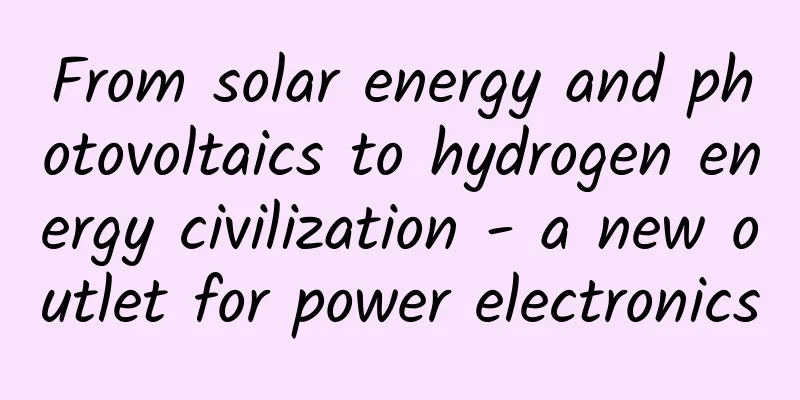Is it true that the “super collider” is about to be built in Qinhuangdao?

|
The Large Hadron Collider (LHC) in Geneva is the world's largest collider, with a circular tunnel length of 27 kilometers. On July 5, it was restarted after three years of shutdown for upgrades. It is reported that the upgraded LHC collision energy can reach 13.6TeV (trillion electron volts), which is 4.6% higher than the collision energy of 13TeV that created the mini universe explosion in 2018. After the European Hadron Collider was built, it has been operated three times and has achieved remarkable achievements that have attracted worldwide attention. This is the fourth operation, which is planned to run for 4 years, and then be upgraded to a higher brightness and run again at a new level in 2029. This news has aroused the attention of netizens to the construction plan of the Chinese collider. How is it going now? As early as 2012, Chinese high-energy physicists proposed to build the world's largest particle accelerator project. The length of the circular tunnel reaches 100 kilometers, which is about 4 times the length of the world's largest hadron collider. Therefore, it is called a "super collider." The first phase of the project is to build an electron-positron collider, referred to as CEPC. However, this plan once caused great controversy in the scientific community. Supporters believe that the super collider will be a great tool for scientific research, and China will become a world center for physics research after its completion, and scientific research will make great progress; opponents believe that building such a collider will be a bottomless pit of huge costs and not cost-effective. The representative figure who opposes the construction of such a magical device is Yang Zhenning, a Nobel Prize winner, a world-class physicist, and an academician of the Chinese Academy of Sciences; the representative figure who supports the construction is Wang Yifang, an experimental high-energy physicist and an academician of the Chinese Academy of Sciences. Both of them are scientific masters, and what they say makes sense. Why Yang Zhenning opposes Yang Zhenning's reason for opposition was that after the advent of the Large Hadron Collider in Europe, the glorious era of high-energy physics research had passed, and there were no more deep-seated problems that needed to be solved by such a collider; in addition, the construction cost was too high and the probability of success was small. The lessons learned from the United States were very profound and should be learned. The United States started building the Large Hadron Collider in 1989, but was forced to cancel the project before it was halfway completed, wasting billions of dollars. The reason for the cancellation was that the budget had repeatedly exceeded the budget limit, which increased from the initial planned $3 billion to more than $8 billion, causing huge opposition from the domestic public. In 1992, when Clinton was president, the project had to be abolished. Yang Zhenning believes that even if my country takes two steps, the first phase of investment will require 36 billion yuan, and the second phase investment will be as high as 140 billion yuan, or even far more, possibly reaching 300 billion yuan. The operating cost of the collider is a huge trap, not to mention the maintenance cost, the power consumption is incredible. Currently, the LHC consumes 200,000 kWh of electricity, which means about 200,000 yuan of electricity per hour. The collider that my country plans to build is four times longer than the LHC, and its power consumption is even more staggering. If it costs 1 million yuan in electricity per hour, it will cost 24 million yuan per day, and 8.76 billion yuan per year. If it runs continuously for four years, the electricity cost will be 35 billion yuan. Add in the cost of equipment maintenance and upgrades and supporting facilities, and the burden is staggering. This is just a funding issue. There are also many other issues such as talent and technology. There are countless difficulties that are difficult to overcome during the construction period. The probability of successful construction is only 40%, which is too uncertain. If the construction is unsuccessful, it will be a waste of money and manpower; if the construction is successful, there will still be many problems in use. The use of this equipment solves the world's top basic scientific problems, which requires a large number of top scientific talents to master. However, China's top high-energy physicists account for less than 1% of the world's total. This talent situation does not seem to be sufficient to support the operation of such equipment, and may very likely lead to the equipment being idle. Therefore, as a developing country, the funds invested in scientific research are limited. Investing so much in this project will inevitably affect the reduction of investment in other areas. Rather than investing in a project with an uncertain future and no social benefits within 50 years, it is better to invest limited funds in more urgent scientific research projects and national economy and people's livelihood. Supporters' Voices/ Yang Zhenning's opposition to the construction of the Large Hadron Collider is not without reason, and he is speaking out for the sake of the country, the people and the faster development of science. His spirit is commendable. It is precisely because some scientists oppose the construction of the Large Hadron Collider that the Chinese Academy of Sciences voted in 2017, with 6 votes against and 5 votes in favor, rejecting the construction plan. However, there are still more scientists in China who support this construction, and the most determined representative is Wang Yifang, Chairman of the CEPC Steering Committee, Director of the Institute of High Energy Physics of the Chinese Academy of Sciences, and Academician of the Chinese Academy of Sciences. He believes that the construction of a "super collider" now is an excellent historical opportunity for China to become a world leader in basic physics research, which can not only obtain top theoretical research results, but also become a world innovation and cooperation platform. China's national strength has greatly increased, and its economic and technological strength are already very strong. Although the first phase of construction costs 36 billion, it is only half of the cost of building a Liaoning aircraft carrier. Using the funds for basic physics research is a step that must be taken sooner or later. If we don't do it now, we will have to do it sooner or later. It is a long-term plan that will benefit future generations. In a speech, Wang Yifang analyzed the ratio of the cost of building accelerators to the GDP of the year in the world. When the United States was building the Superconducting Collider (SSC), its annual investment accounted for 0.01% of its GDP at the time. When the European Organization for Nuclear Research started building the Large Electron-Positron Collider (LEP) and the Large Hadron Collider (LHC) in the 1980s, its annual investment accounted for 0.02~0.03% of its GDP at the time. If China starts building CEPC in 2020, it will only account for 0.005% of its GDP. Moreover, this money can be saved from scattered research in high-energy physics. He calculated that the research funds of laboratories and scientists across the country for 20 years are far greater than this investment. This money will be saved after the CEPC is built. Wang Yifang also compared the opening ceremony of the 2008 Beijing Olympics with the opening ceremony of the 2012 London Olympics. Our themes were papermaking, brushes, movable type printing, and Tai Chi, while the themes reflected in London were the atomic nucleus, the European Organization for Nuclear Research CERN, and the inventor of the World Wide Web. Although both performances are very shocking, ours reflects our ancestors, while London reflects modern technology. We cannot always be immersed in the proud history of ancient times, but we must work hard and rise up today. This call is deafening and thought-provoking. Among the supporters is a heavyweight scientist, Chinese American, internationally renowned mathematician, the first Chinese winner of the Fields Medal, member of the U.S. Academy of Sciences, foreign member of the Chinese Academy of Sciences, and Harvard University professor Shing-Tung Yau. He believes that the advancement of the CEPC project will not only make China a leader in related fields, but also use the project to attract a large number of world-class scientists to China for exchanges and work, and even take root in China, which will have a huge and far-reaching impact on China's scientific development. Both the pros and cons are for the development of the country and both are reasonable. In the first round of voting by the top scientists of the Academy of Sciences, the opposing opinions prevailed. So has the project been shelved? No, the scientific team headed by Wang Yifang has not stopped the conceptual design and completed the design in 2018. Opposition is ineffective? "Super Collider" is about to be built? Now there is a rumor circulating on the Internet that "Yang Zhenning's opposition is invalid and the project will start in 2022", and it is claimed that the construction site is in Qinhuangdao. So, is this news accurate? After searching for a long time, Time and Space Communication found that all the claims still originated from some reports in November 2018. On November 14, 2018, China Science Daily published an article titled "The super collider has a new outline, the conceptual design report was completed in three years, and it has been moving forward amid controversy for six years", confirming the news that the CEPC research working group had officially released the "CEPC Conceptual Design Report". On November 24, Nature, the world's most famous scientific magazine, published an interview with Wang Yifang on its official website. Wang Yifang said that after six years of design work, the international professional committee said that the collider is ready and construction may start as early as 2022. If everything goes well, it can be open to the public in 2030. Once completed, this 100-kilometer-long "big guy" will be the world's largest particle crusher with a service life of 10 years. In addition, I also found a report of the Beijing News interviewing Wang Yifang in May 2020. During the interview, Wang Yifang revealed the latest scientific research progress of CEPC, saying that the research and development results of the first batch of key equipment have been unveiled, some of which have met the design index requirements, and the overall work is progressing as planned. However, Wang Yifang also said that due to the impact of the epidemic, fiscal funds have been reduced, and some large projects are facing risks such as equipment procurement being unable to proceed normally, bidding being delayed, and project suspension. Regarding the project site selection, Wang Yifang said that they are constantly comparing and selecting, and comprehensively considering three points: First, the geological conditions must be good to reduce the construction cost; second, it is hoped that it will be built in a second- or third-tier city with an international atmosphere; third, it is hoped that the annual average temperature will be lower, and the north is more suitable than the south. These three conditions are mainly to reduce the difficulty of construction and operating costs, and to attract more scientists from around the world to work. In fact, the Institute of High Energy Physics of the Chinese Academy of Sciences has started preliminary site selection work from south to north since 2013, and has successively visited Zhangjiakou City, Hebei Province, Funing County, Qinhuangdao, Baodi District, Tianjin, Qinchuan, Shaanxi, Huangling County, Yan'an, Xinyang, Henan, and Shenzhen, Guangdong. In 2017, Guokr conducted a poll on its official account asking "Where do you want CEPC to be built?" Huangling County in Yan'an received the most votes, leading by more than 2,000 votes, with a vote share of over 50%. I think this poll is not very valuable as a reference, and I have not seen any definite news on where the final site will be chosen. Therefore, there is no authoritative evidence that CEPC will start construction in Qinhuangdao in 2022. However, judging from comprehensive information from all aspects, my country's "super collider" project has been prepared step by step, and it seems that it will be built at the right time. So, what exactly is a collider and what is it used for? We have talked about so much controversy and investment before, and said that this equipment is the top of the scientific community and a powerful weapon of a great country. So what exactly is this behemoth and what is its use? Simply put, the so-called collider is actually a particle crusher, which uses huge energy to form two beams of particles moving in opposite directions, such as electrons, protons, and atomic nuclei, and then accelerates them to a state close to the speed of light in a tunnel, causing the particles to break and scatter, generating huge energy at the same time. Scientists use a variety of instruments and equipment to observe and record the various phenomena and trajectories produced after these particles are crushed, discover new particles from them, peek into the deepest mysteries of the universe, understand the hidden laws of the universe and nature, and use these laws to benefit mankind and improve the level of human civilization. The European LHC is such a huge machine. It is located 100 meters underground on the border between Switzerland and France. It has a 26.659-kilometer-long circular tunnel and a series of supporting equipment. When it runs at full capacity, the particle beam inside will run at a speed of 11,245 circles per second, which is about 99.99% of the speed of light. It is undoubtedly the fastest "tunnel" in the world. At the same time, this "tunnel" is the most "empty" place in the solar system, with an air pressure of only 10^-13 standard atmospheres, which is only one tenth of the air pressure in a high vacuum state on the surface of the moon. It is also the hottest place in the world. When particle collisions occur, the maximum temperature can reach 1 million times the temperature of the sun's core, which is about 10 trillion K or more. It is also the coldest place in the world. The temperature of the acceleration cavity when particles are moving is only 1.9K, which is -271.3℃, more than 1K lower than the cosmic microwave background radiation. It is also the world's most powerful supercomputer system. The data obtained from each large-scale experiment in a year can fill 100,000 double-layer DVD discs. In order to analyze this data, thousands of scientists from all over the world participate, and hundreds of thousands of computers use distributed computing networks to form the world's most powerful supercomputer system. The "super collider" that China is planning to build will have a collision energy far exceeding that of the LHC. The world's top scientists all want to find out the ultimate questions such as what the universe looks like and what matter is. Over the past few decades, the LHC has continued to explore these issues in depth and has made many breakthrough achievements, such as the discovery of the God particle - the Higgs boson (abbreviated as Higgs). It is this magical particle that only exists for 1.56*10^-22 seconds and creates the mass of matter; it created a mini universe at one trillionth of a second after the Big Bang, verifying the Big Bang universe model. China's construction of a "super collider" will be more helpful in solving these problems. Wang Yifang pointed out that although the LHC has made great achievements, there are still many mysteries that have not been solved, such as where the mass of the neutrinos comes from, and the mechanisms of neutrinos, dark matter, dark energy, and antimatter. After the construction of China's "super collider", the collision will be carried out at a higher brightness, which will reveal more fundamental problems of the world and bring my country's science and technology to the forefront of the world. If this is achieved, it will fill many domestic gaps and drive breakthroughs in many fields, such as high-frequency cavity microwave power, controlled nuclear fusion, superconducting materials, aerospace, etc. It will also further strengthen international exchanges and cooperation and contribute to improving the world's scientific and technological level. So, what do you think about this? Welcome to discuss, thank you for reading. The copyright of Space-Time Communication is original. Thank you for your understanding and cooperation. |
Recommend
How did "Nezha" gain 15 billion traffic on Douyin without spending any money?
"Nezha" has grossed over 3.5 billion yu...
Enjoy the holidays, but don’t forget to give your eyes a break!
Enjoy delicious food during the Spring Festival T...
How to use coupons to increase the conversion rate of education and training companies?
In recent years, the penetration rate of online e...
Confirmed! 350 million years ago, the majestic Qinling Mountains were a vast ocean!
Fossils found in northwestern Hubei prove that Qi...
China's APP category rankings in the first half of 2016!
The flowers are the same every year, but the peop...
How high does an airplane have to fly to be free from the control of the earth's gravity? How can it escape the earth's gravity?
People are full of fantasies about flying, and th...
Full of practical information, making data interesting! How to design practical and easy-to-read charts
1. The purpose and value of charts Chart design i...
Your gas stove may be quietly turning into an "assassin"! Count the "crimes" of gas stoves
Today, we must talk to you about a "familiar...
What are the functions of the Gardening Mini Program? How much does it cost to develop a garden art app?
Nowadays, more and more people like to visit vario...
Why do people laugh so hard that they can't close their mouths? The secret that makes people drop their jaws...
"Hahaha, I can't stop, I can't stop ...
[Beautiful article] This is how the first batch of users of Didi, Momo, and Meituan came from!
How did those awesome Internet companies promote ...
Do you want to pee as soon as you enter the swimming pool? ! How much urine is there in the swimming pool?
This summer, the heat is unbearable all over the ...
Zero profit on hardware: Customized mobile phones enter a new era
Whether operators say "free phone purchase&q...
Is it necessary to build a WeChat mini program mall?
According to the 2019 WeChat data report, the num...
[Smart Farmers] Don’t be careless: Food poisoning caused by this bacteria often tops the list
[Smart Farmers] Don’t be careless: Food poisoning...









